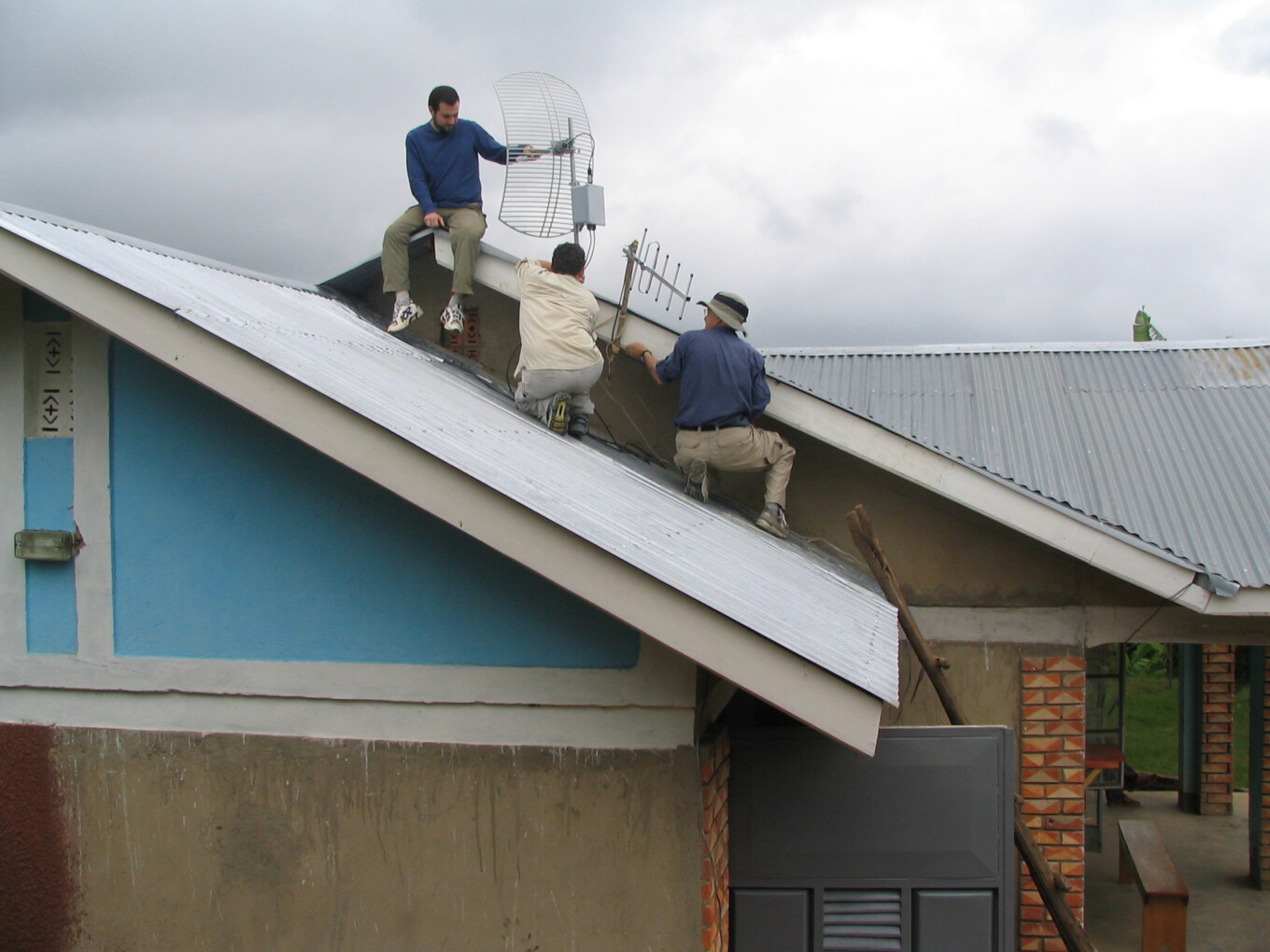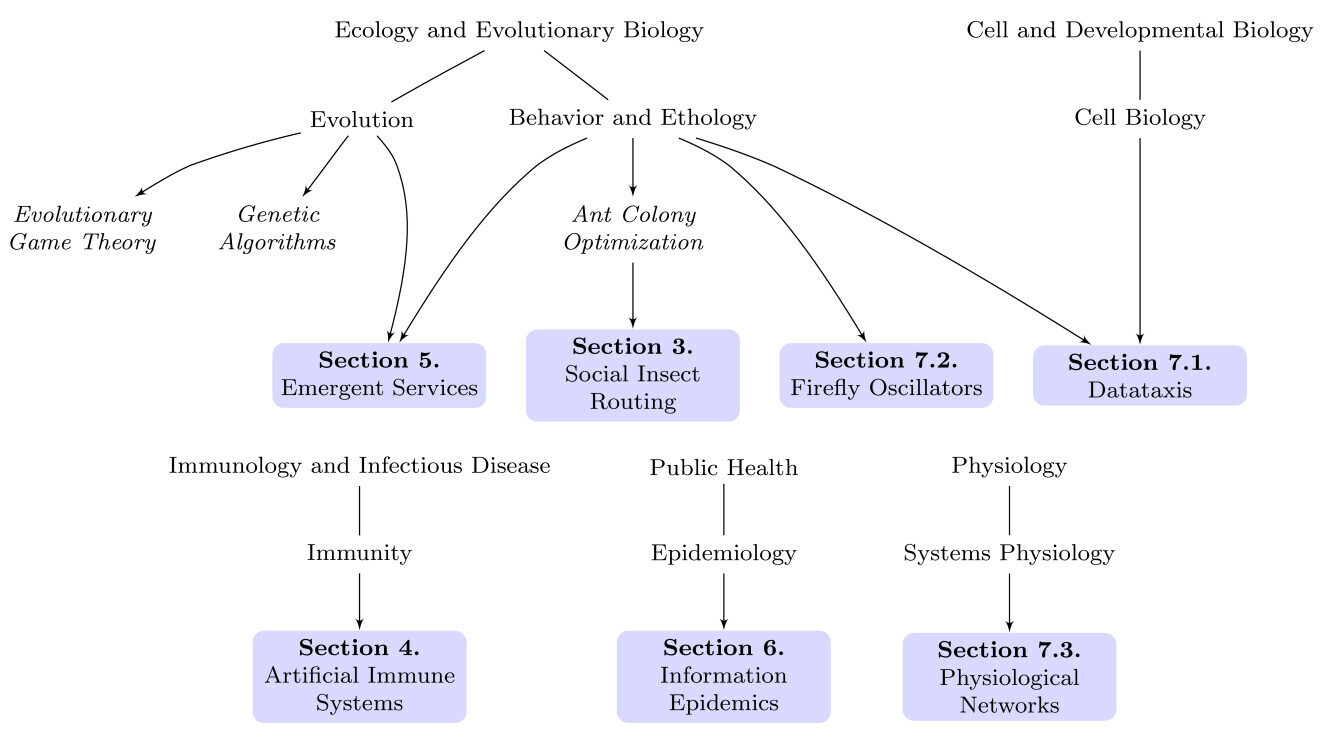My first professional exposure to wireless networks was at Inveneo, where our mission was to bring computers, telephones, and the internet to rural and highly underserved communities around the world. When it came time for our first deployment (in rural Uganda), it was an all-hands-on-deck sort of affair. We all chipped in setting up computers, solar panels, and a long-distance, point-to-point WiFi network between rooftops.

The power of networks, wireless ones in particular, stuck with me from my Inveneo days. Which is probably part of the reason I was drawn to them as a research topic in my final two years at UCLA.
In particular, I became interested in emergence in complex systems, and how it could be applied to network protocols. This began with an exploration of how to design emergent services for wireless networks in 2009, which was mostly a thought exercise and only published as a university technical report. However, I quickly realized that emergent behavior was a common property of complex biological systems, and decided to do a deep dive into network protocols inspired by biology. The result was a survey paper on the topic.

At the time, my advisor, Professor Lixia Zhang, was just beginning an ambitious new research project called Named Data Networking. NDN asserts that data, not hosts, are the central element of modern networks. This suggests a radically different approach to network routing: rather than asking for a particular server by address, ask for the data you want by name. The data could be at any location. This allows any device in the network to cache data and provide it to nearby nodes upon request.
Up until this point, my work on wireless networks had been concerned with physical mobility of devices. However, we quickly realized that the same techniques could be naturally extended to the logical mobility of content under the NDN model. In fact, we argue that NDN is a better model for ad hoc networks than the traditional IP stack.
The culmination of my work was a new, multi-hop routing protocol for ad hoc wireless networks. Initially called Listen First, Broadcast Later (LFBL), I later renamed it to Broadcast-Only Named Data (BOND) after my collaborators (rightly) complained about the unpronounceability of the acronym. BOND turned out to be the first complete protocol specification based on the NDN model. The protocol is probably best explained in the slide deck from my Ph.D. defense.

Years later, out of a desire to work on wireless network protocols again, I joined Swarm (now part of SpaceX), a startup building tiny satellites for affordable IoT connectivity. Though I never got a chance to work on their protocols directly (primarily spending my time building their customer-facing web application), I learned a great deal about satellite communications from the incredible team there.
Relevant publications:
-
BOND: Unifying mobile networks with named data
[Slides]
Michael Meisel. Ph.D. Dissertation, University of California, Los Angeles, 2011. -
Ad hoc networking via named data
[DOI]
Michael Meisel, Vasileios Pappas, and Lixia Zhang. In MobiArch '10: Proceedings of the fifth ACM international workshop on Mobility in the evolving internet architecture, 2010. -
Listen first, broadcast later: Topology-agnostic forwarding under high dynamics
Michael Meisel, Vasileios Pappas, and Lixia Zhang. In Annual Conference of International Technology Alliance in Network and Information Science, 2010. -
A taxonomy of biologically inspired research in computer networking
[DOI]
Michael Meisel, Vasileios Pappas, and Lixia Zhang. In Computer Networks 54.6, 2010. -
Emergent mobile services
Michael Meisel, Vasileios Pappas, Petros Zerfos, and Lixia Zhang. Technical Report 090015, UCLA Computer Science Department, 2009.